




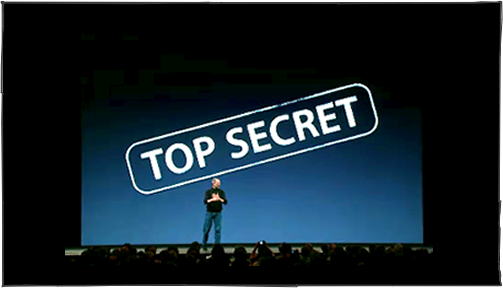
Nothing is more tantalizing than being left with a cliffhanger. Apple has capitalized on this to create anticipation for the top secret features yet to be announced for Leopard. What are they?
My wishlist of ideas for Leopard already has several of its points checked off, and many of my predictions for WWDC were answered as well. In addition, there were all those new things that I hadn’t even guessed, and the details that certain people don’t want you to notice.
The realization of some of my ideas were only hinted at; for example, draggable tabs. Safari in Leopard now boasts the capacity to collect its existing open windows together into a single tabbed window. That means it’s only one animation away from having tabs that can drag in and out of windows. Will Leopard allow tabs to rip away from their window to spawn new windows of their own in the manner of Final Cut Pro? My fingers are crossed.
The Flashy Half
Historically, Apple delivers two sets of features in every Mac OS X release. The first half is made up of the showy, flashy sizzle of user focused features that have clever names, shiny and translucent icons, and marketing points that are easy to blurb in advertising as features users have to have. These are the features that sell boxes to consumers.
-
•Panther 10.3 debuted Exposé, Safari, Fast Users Switching, and File Vault.
-
•Jaguar 10.2 introduced Rendezvous, iChat, and Address Book.
In retrospect, the flashy features of previous Mac OS X releases don’t sound that exciting. They were at the time however! Every new version introduced a huge new jump in how slick everything looked and worked. Much of the reason for this was invisible however.
The Invisible Half
The other half of every Mac OS X release is actually more significant. It’s the new technologies under the hood to support all the new consumer-facing features, things like upgraded libraries, new versions of code drawn from open source projects, and new frameworks.
-
•Jaguar 10.2 introduced Quarts Extreme for hardware accelerated graphics; support for CUPS, which opened up and standardized the printing architecture, and it adopted more modern code from various open source projects.
-
•Panther 10.3 similarly overhauled performance in the core OS, bringing Darwin up to date with FreeBSD 5. Developers got Cocoa Bindings and administrators got networking updates and Kerberos authentication integrated throughout the system.
-
•Tiger 10.4 continued with new core OS code, and added significant new support for metadata indexing, for sending specialized image and video processing directly to the video hardware, added extended file permissions using ACLs, introduced new system wide Sync Services, and premiered the new Core Data, an API for modeling application data and writing it into a file or database.
The second half features are hard to sell to consumers, because they don’t use them directly. However, users often actually benefit more from these invisible improvements than they do from the flashy new applications.
The invisible second half of Mac OS X’s features are what makes it boot and operate faster and more reliably in every new version. These improvements also spawn entirely new classes of applications and enable third party developers to be more productive.
Frameworks like Core Data also help developers to build applications with less effort, so they can focus on their specialty, not in retreading the wheel for every new application. That means more applications ship with more features and fewer bugs.
The WWDC keynote, along with Apple’s web page previews, introduced as many new flashy bits as we’d seen for any release prior to Tiger. We got a new flashy data recovery tool in Time Machine, an entirely new desktop management extension to Exposé in Spaces, a whole new way for end users to build their own Dashboard Widgets, even a casual way to rip a bit of a web page for viewing live on the Dashboard layer.
There was also a whole new set of collaboration and presentation features slipped into iChat. Things I’ve been asking for, such as a Remote Desktop Express, were delivered as a feature integrated right into iChat that even my mom could use.
And then there was a whole new set of Personal Information Manager tools built into Mail, Address Book, and iCal, although you won’t even have to use Apple’s own apps to benefit from them. That’s because Apple introduced Notes, Tasks and Events as a system wide function that any application can tap into, just like any app can access the Address Book for contact information.
Apple glossed over the new text to speech and accessibility features, and only mentioned some of the new details for other apps like Safari and Mail on their Leopard sneak preview web page.
Those new features alone match the flashy improvements in previous Mac OS X releases. In addition to all that, we also know there are some significant things that are being withheld for later. If you weren’t impressed, there’s something wrong with you.
Perhaps your expectations have been set ridiculously high and your inner child has grown impervious to glee. To fix that, I made up a few extra flashy-half features that should poke your lethargic hypothalamus enough to generate a flicker of a pulse.
Wizzy New Leopard Features to Blow Away Even the Most Jaded
Introducing the Top Secret Leopard Trading Cards. Collect them all! You can upload your own ideas for Leopard Features (including graphics) using the comment link below.
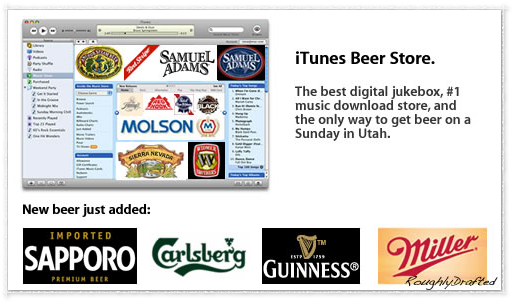
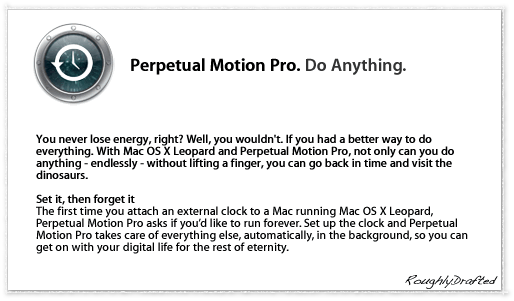
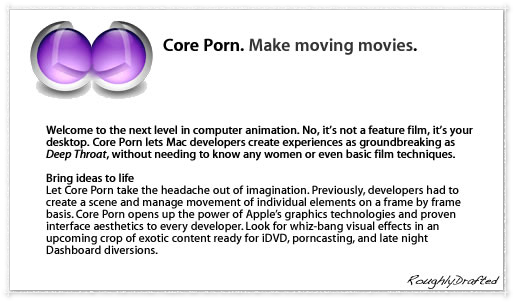

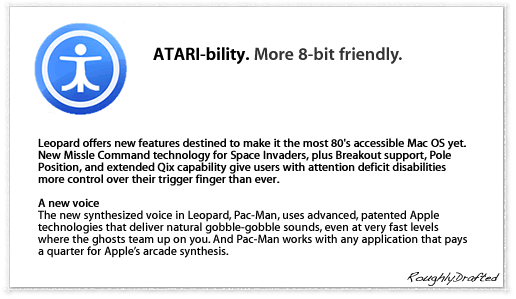
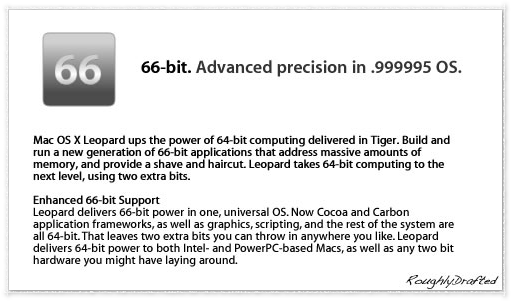
This Series

| | Comment Preview
 Read more about:
Read more about:

 Send |
Send |

 Subscribe |
Subscribe |
 Del.icio.us |
Del.icio.us |
 Digg |
Digg |
 Furl |
Furl |
 Reddit |
Reddit |
 Technorati
Technorati
Click one of the links above to display related articles on this page.
Top Secret Leopard Features Unleashed!
Sunday, August 13, 2006





Ad










